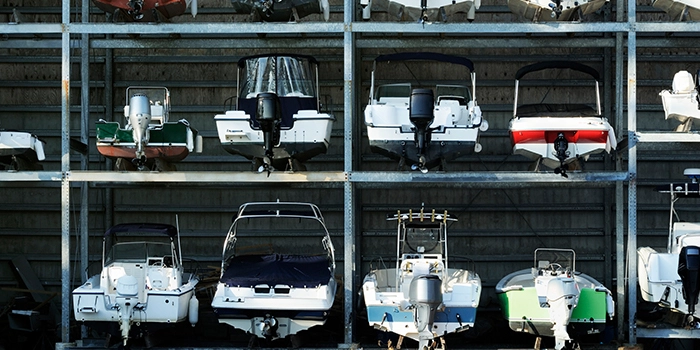How to Winterize a Boat in 6 Easy Steps


Catching a big fish, exploring a new lake, taking your kid wakeboarding — are all fun aspects of boating. Pulling your boat out for the winter, scrubbing off barnacles, and treating its fuel line — not so much. Maybe you don’t mind the chores, but you lament summer has officially ended. We’ve put together these winterizing tips so come springtime you’ll be able to get your boat back out on the water safely and efficiently for another great season.
The first order of business is to reacquaint yourself with your owner’s manual for any specifics pertaining to your boat’s make and model.
That might be your garage if your boat is small. For larger boats, a covered, climate-controlled boat storage facility may be best. You could also consider shrink-wrapping your boat if you must keep it outside. If you live in a climate that allows for in-water storage, your job is easier. Follow your owner’s manual to the letter, and be sure to pay attention to inclement weather forecasts as well as check on your boat frequently over the cooler months.
How you winterize your engine will depend on whether you have an inboard, sterndrive or outboard. Consult your owner’s manual for specifics, and check out these tips from the National Marine Manufacturers Association.
Take everything off your boat. Over the winter, you can take inventory of your gear and safety equipment so everything is stocked up, in good working order, and ready to go at spring launch. If your boat has a galley, clean out the refrigerator and food storage cabinets.
Before you tuck your boat away for the winter, give it a good scrubbing with a dedicated boat cleaner. Remove grime from the hull and deck, and clean and vacuum the interior. Set lounge and seat cushions on end to promote air circulation. Invest in some moisture and odor control pellets and place throughout. Follow your instruction manual for cleaning and prepping your bilge. Once it’s squeaky clean, inspect your boat for any damage requiring repairs or sealant. Don’t forget to wax!
Most manufacturers recommend filling your tank to prevent condensation, and adding a fuel stabilizer.
We hope you’ll have plenty of great adventures while your boat’s in hibernation, and we’ll be ready to celebrate with you when it’s time to back the trailer down the ramp. In the meantime, test your boating safety IQ. As always, your Farm Bureau agent is here to assist you with any policy questions.